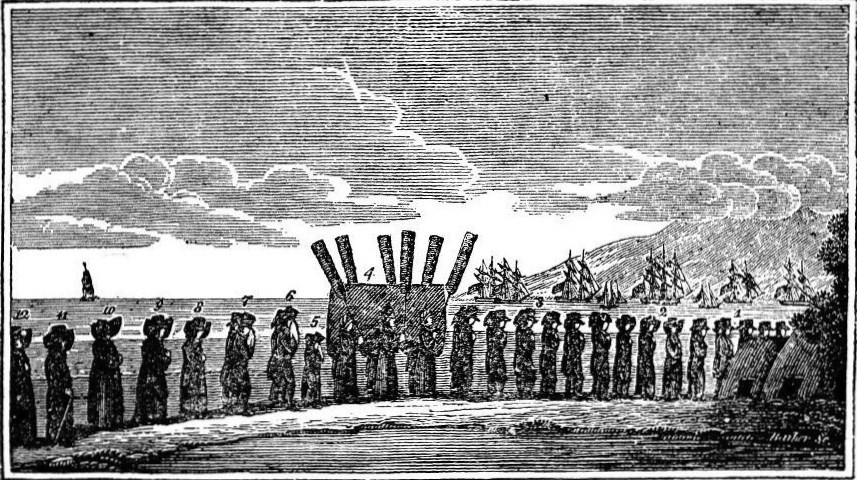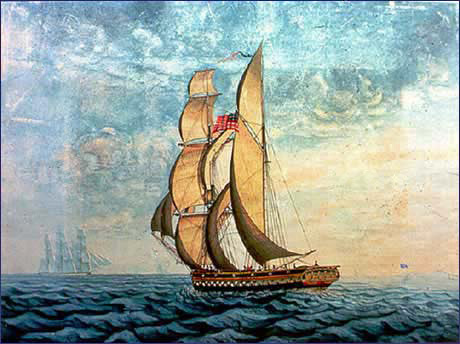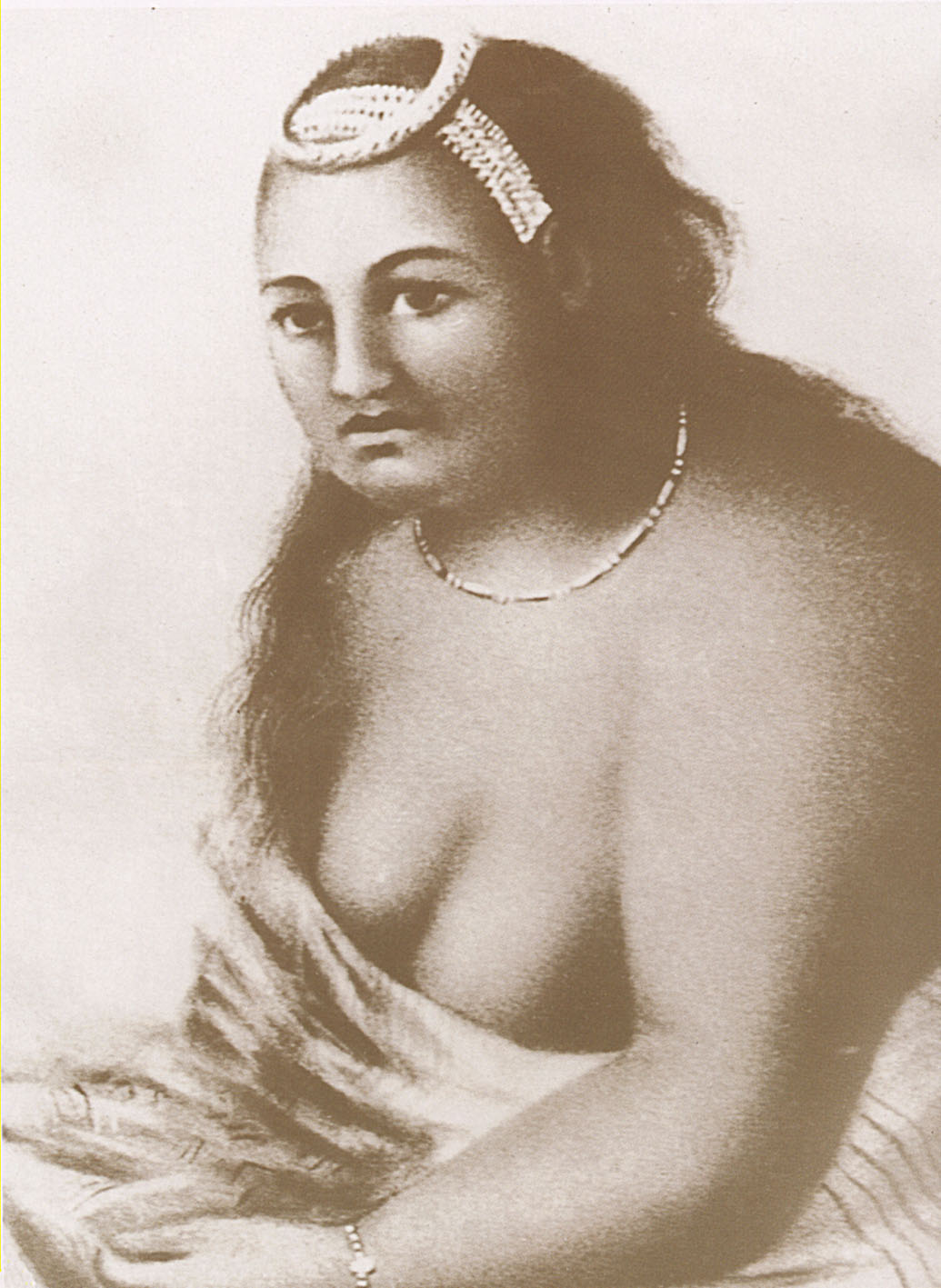|
Haʻaheo Kaniu
Haʻaheo Kaniu or Kaniuʻopiohaʻaheo (late 18th century – ) was a high chiefess (aliʻi) and member of the royal family of the Hawaiian Kingdom. She was also known as Lydia Haʻaheo Kaniu. Genealogy and family Haʻaheo Kaniu was born in the late 18th-century. Sources on Haʻaheo Kaniu's genealogy are conflicting. An 1858 court case named Kalailua as the mother of Haʻaheo Kaniu and stated Kalailua was sister of ʻAikanaka (maternal grandfather of her future ''hānai'' son Kalākaua). An 1874 account in the Hawaiian language newspaper ''Ka Nuhou Hawaii'' listed her parent as Kalailua and Keaweaimoku and further specified that Kalailua was the child of Kaoo and Kamakaeheikuli. Historian Abraham Fornander named High Chiefess ʻAkahi as her mother, who was a sister of Keawemauhili, Aliʻi Nui of Hilo and a rival of King Kamehameha I who conquered the Hawaiian Islands into a unified kingdom by 1810. This ʻAkahi was the foster mother of Keawemauhili's orphan daughter Kapi ... [...More Info...] [...Related Items...] OR: [Wikipedia] [Google] [Baidu] |
Keōua
Keōua Kalanikupuapaīkalaninui Ahilapalapa, sometimes called Keōua Nui ("Keōua the Great") (died c. 1750s–1760s) was an Ancient Hawaiian noble and the father of Kamehameha I, the first King of united Hawaii. He was progenitor of the House of Keōua Nui. His first name Keoua, or Ke-ao-ua means ''"the rain cloud"'' and was given to him by his subjects because of his generosity and his sacred kapu of the heavenly rains. Life Keōua Nui's father was the High Chief Keeaumoku Nui, the second son of Keaweʻīkekahialiʻiokamoku, King of Hawaii island, and his second wife, Princess Kalanikauleleiaiwi. His mother, High Chiefess Kamakaimoku, was from the noble family of I of Hilo. Keōua was a half-brother of King Kalaniōpuu of the island of Hawaii through his mother who also married Kalaninuiamamao, Kalaniōpuu's father. His name Keoua, or Ke-ao-ua means ''"the rain cloud"'' and was given to him by his subjects because of his generosity and because of the formation of the ra ... [...More Info...] [...Related Items...] OR: [Wikipedia] [Google] [Baidu] |
Wahinepio
Kahakuhaʻakoi Wahinepio (died 1826) was a Hawaiian chiefess and member of the royal family during the Kingdom of Hawaiʻi. Wahinepio means ''captive women'' in Hawaiian. Sometimes she is called Wahineopiʻo, or an extra ʻokina is added, calling her Kahakuhaʻakoʻi. She was also called Kamoʻonohu. She was considered Kamehameha I's third favorite wife and served as female Governor of Maui, an act unheard of at the time in the western world, but common in Hawaiian history. Life She was born on the island kingdom of Maui. Her father was Kekuamanoha, and her mother was Kamakahukilani, the niece of her father. Through her father she was a granddaughter of Kekaulike, the King or Moʻi of Maui. Her mother was the daughter of Kauhiaimokuakama, the eldest son of Kekaulike, who was denied the right of succession to the throne of Maui due to his mother Kahawalu's inferior rank in contrast to Kekaulike's other wife Kekuiapoiwa I. Supported by King Peleioholani of Oahu, he fough ... [...More Info...] [...Related Items...] OR: [Wikipedia] [Google] [Baidu] |
Kekauʻōnohi
Keahikuni Kekauʻōnohi (c. 1805–1851) was a Hawaiian high chiefess who was a member of the House of Kamehameha. She was granddaughter to King Kamehameha I and one of the wives of Kamehameha II. Her Christian name is disputed; it is given as Mikahela in the 1848 Mahele Book and as Miriam in later sources. Biography She was born circa 1805 at Lahaina, Maui. Her father was Kahōʻanokū Kīnaʻu. Her mother was Kahakuhaʻakoi Wahinepio, sister of Boki and Kalanimoku and granddaughter of Alii Nui, Kekaulike of Maui. Her father was a son of Kamehameha I and his wife Peleuli, daughter of Kamanawa, one of the royal twins. She married her uncle Kamehameha II. She was one of his five wives. Others were Kamāmalu, Pauahi, Kīnaʻu, and Kekāuluohi. She was the youngest, but Kamāmalu was Liholiho's favorite. She was at the famous meal when the '' kapu'' system was overturned in 1819, known as the ʻAi Noa. After Liholiho's death in London, she went to Kauaʻi to live with her ... [...More Info...] [...Related Items...] OR: [Wikipedia] [Google] [Baidu] |
Keeaumoku II
George Cox Kahekili Keʻeaumoku II or Keʻeaumoku ʻOpio (1784–1824) was part of an influential family at the time of the founding of the Kingdom of Hawaii. he served as a military leader, and then became a convert to Christianity and Royal Governor of Maui. He is sometimes called Keʻeaumoku III if Keʻeaumoku Nui is counted as Keʻeaumoku I and Keʻeaumoku Pāpaʻiahiahi is counted Keʻeaumoku II instead. Life He was born probably in 1784. His father was Keʻeaumoku Pāpaʻiahiahi (1736–1804), a noble from Hawaiʻi Island, and his mother was Nāmāhānaʻi Kaleleokalani, the wife of her half-brother the King of Maui, Kamehameha Nui. From his mother he was a related to many of the kings of Maui. His father had been a counsellor and supporter of Kamehameha I during his early years. As the eldest son of Keʻeaumoku, he succeed his father as a counsellor during the last years of Kamehameha's campaigns in 1804. He was appointed governor of Maui and adjacent islands of Molok ... [...More Info...] [...Related Items...] OR: [Wikipedia] [Google] [Baidu] |
Nahienaena
Harriet or Harrieta Keōpūolani Nāhiʻenaʻena (1815–1836) was a high-ranking princess during the founding of the Kingdom of Hawaii and the conversion of some of the ruling class to Christianity. Life In the Hawaiian language ''nā ahi ʻena ʻena'' means "the red-hot raging fires". Nāhiʻenaʻena was born in 1815 at Keauhou Bay, South Kona, island of Hawaiʻi. Her parents were Kamehameha I and Keōpūolani, the Queen consort. She had two older brothers, ''hiapo'' (first born) Liholiho, and Kauikeaouli, who later became Kings Kamehameha II and III. Nāhiʻenaʻena was the sacred ''muli loa'' (last born) child, and was trained for the immense ''kuleana'' (privilege and responsibility) that would accompany someone of such high birth. In 1825, the ship returned with the bodies of King Kamehameha II and the Queen Kamāmalu, who had died on a trip to London. Ship's artist Robert Dampier painted a portrait of the ten-year-old princess, dressed in a red feather cloak for t ... [...More Info...] [...Related Items...] OR: [Wikipedia] [Google] [Baidu] |
Hoapili
Ulumāheihei Hoapili (c. 1775 – January 3, 1840) was a member of the nobility during the formation of the Kingdom of Hawaii. He was a trusted military and political advisor to King Kamehameha I, known as "Kamehameha the Great". Although trusted with one of the last symbolic rites of the Hawaiian religion, he later became a supporter of Christian missionaries. Life Ulumāheihei (his original name) was born around 1775, during the reign of King Kalaniʻōpuʻu. His father was High Chief Kameʻeiamoku, known as one of the "royal twins" who helped Kamehameha I come to power. After his father's death, he inherited his father's counselor position in Kamehameha's court. In his youth he was athletic, standing about tall. A story was told of how he once wrestled down an attacking bull by its horns. A few years after the 1795 battle of Nuʻuanu when Kamehameha conquered Oʻahu and Maui, Hoapili was left in charge of the island of Oʻahu and the royal court settled at Kamakahonu in pres ... [...More Info...] [...Related Items...] OR: [Wikipedia] [Google] [Baidu] |
Keōpūolani
Kalanikauikaalaneo Kai Keōpūolani-Ahu-i-Kekai-Makuahine-a-Kama-Kalani-Kau-i-Kealaneo (1778–1823) was a queen consort of Hawaii and the highest ranking wife of King Kamehameha I. Early life Keōpuolani was born around 1778 at an area known as Pahoehoe of Pāpōhaku, near present-day Wailuku, on the island of Maui. She was known as Kalanikauikaalaneo in her early childhood. Her name means "Gathering of the Clouds of Heaven". Her father was Kīwalaʻō, King of Hawaii island. He was the son of King Kalaniʻōpuʻu of Hawaii island who met Captain James Cook at Kealakekua Bay. Her mother was Queen Kekuiapoiwa Liliha, half-sister of Kamehameha I. Their father was Keōuakupuapāikalani. Kiwalaō and Kekuiapoiwa Liliha were half-siblings through their shared mother, High Chiefess Kalola-Pupuka-Honokawahilani of Maui. As a child, Keōpuolani lived for a while in Hāna (the eastern tip of Maui), then moved back to the Wailuku area. Battle of Kepaniwai In 1790, while Keōpuolan ... [...More Info...] [...Related Items...] OR: [Wikipedia] [Google] [Baidu] |
Kamehameha III
Kamehameha III (born Kauikeaouli) (March 17, 1814 – December 15, 1854) was the third king of the Kingdom of Hawaii from 1825 to 1854. His full Hawaiian name is Keaweaweula Kīwalaō Kauikeaouli Kaleiopapa and then lengthened to Keaweaweula Kīwalaō Kauikeaouli Kaleiopapa Kalani Waiakua Kalanikau Iokikilo Kīwalaō i ke kapu Kamehameha when he ascended the throne. Under his reign, Hawaii evolved from an absolute monarchy to a constitutional monarchy with the signing of both the 1840 Constitution, which was the first Hawaiian Language Constitution, and the 1852 Constitution. He was the longest reigning monarch in the history of the Kingdom, ruling for 29 years and 192 days, although in the early part of his reign he was under a regency by Queen Kaahumanu and later by Kaahumanu II. His goal was the careful balancing of modernization by adopting Western ways while keeping his nation intact. Early life Kauikeaouli was born at Keauhou Bay, on Hawaii island, the largest isla ... [...More Info...] [...Related Items...] OR: [Wikipedia] [Google] [Baidu] |
Kamānele
Mele Kaʻauʻamokuokamānele or Kamānele (c. 1814 – May 7, 1834) was a high chiefess of the Kingdom of Hawaii and the betrothed bride of King Kamehameha III. Her early death prevented the marriage from occurring. Her Hawaiian name Kamānele means "the sedan chair". Life Born around circa 1814, her parents were John Adams Kuakini and Kaniuʻopiohaʻaheo. The Governor of the Island of Hawaii, her father Kuakini was the younger brother of Queen Kaʻahumanu, the favorite wife of Kamehameha I, who served as kuhina nui and regent for his successors King Kamehameha II and Kamehameha III. Her family descended from the aliʻi of Maui and Hawaii. In 1825, Kamānele and other chiefs attended the baptism of her aunt Queen Kaʻahumanu by Hiram Bingham I at the site where Kawaiahaʻo Church stands today. Kamānele most likely converted as well during this period and was christened with the name "Mele", the Hawaiian version of Mary. When her aunt died in 1832 Kamānele occupied the covered l ... [...More Info...] [...Related Items...] OR: [Wikipedia] [Google] [Baidu] |
Kamehameha II
Kamehameha II (November 1797 – July 14, 1824) was the second king of the Kingdom of Hawaii. His birth name was Liholiho and full name was Kalaninui kua Liholiho i ke kapu ʻIolani. It was lengthened to Kalani Kaleiʻaimoku o Kaiwikapu o Laʻamea i Kauikawekiu Ahilapalapa Kealiʻi Kauinamoku o Kahekili Kalaninui i Mamao ʻIolani i Ka Liholiho when he took the throne. Early life Kamehameha II was born in the month of Hanaiaʻeleʻele (corresponding to November) 1797 in Hilo, on the island of Hawaiʻi, the first born son of Kamehameha I with his highest-ranking wife Keōpuolani. It was originally planned that he would be born at the Kūkaniloko birth site on the island of Oʻahu but the Queen's sickness prevented travel. Given in care to his father's trusted servant Hanapi, who took the child to rear him in the lands of Kalaoa in Hilo Paliku, he was taken back, after five or six months, by his maternal grandmother Kekuʻiapoiwa Liliha because she felt he was not getting ... [...More Info...] [...Related Items...] OR: [Wikipedia] [Google] [Baidu] |
Kuhina Nui
Kuhina Nui was a powerful office in the Kingdom of Hawaii from 1819 to 1864. It was usually held by a relative of the king and was the rough equivalent of the 19th-century European office of Prime Minister or sometimes Regent. Origin of the office Before the establishment of the office of ''Kuhina Nui'' by Kamehameha, there was a position called Kālaimoku ("kālai" meaning "to carve" and "moku" being an island). This was an ancient office from the very dawn of Hawaiian civilization. During this time before the ''Kuhina Nui'' Kalanimoku, a trusted chief of Kamehameha, was the Kālaimoku until Kamehameha established the office of the ''Kuhina Nui''. When King Kamehameha II assumed the throne in 1819, his father's favorite wife, Queen Kaʻahumanu, told him Kamehameha I had wished for her to rule the kingdom alongside him. Whether this was really the will of Kamehameha I is a matter of debate. In either case, Kamehameha II did not object and the office of ''Kuhina Nui'' was created f ... [...More Info...] [...Related Items...] OR: [Wikipedia] [Google] [Baidu] |



.jpg)
%2C_Nahiennaena_(1825).jpg)
.jpg)
_-_Kamehameha_III%2C_1825.jpg)


